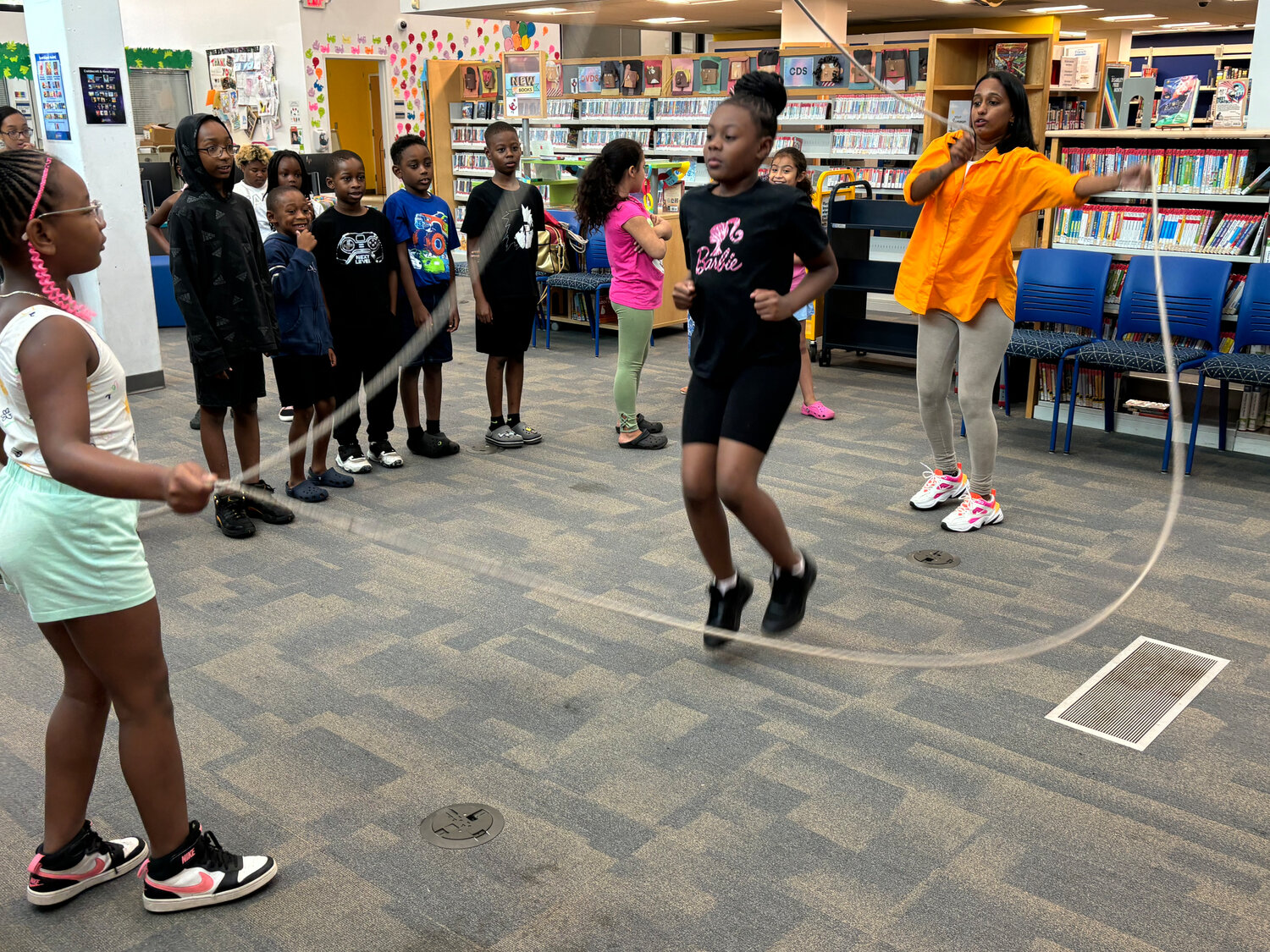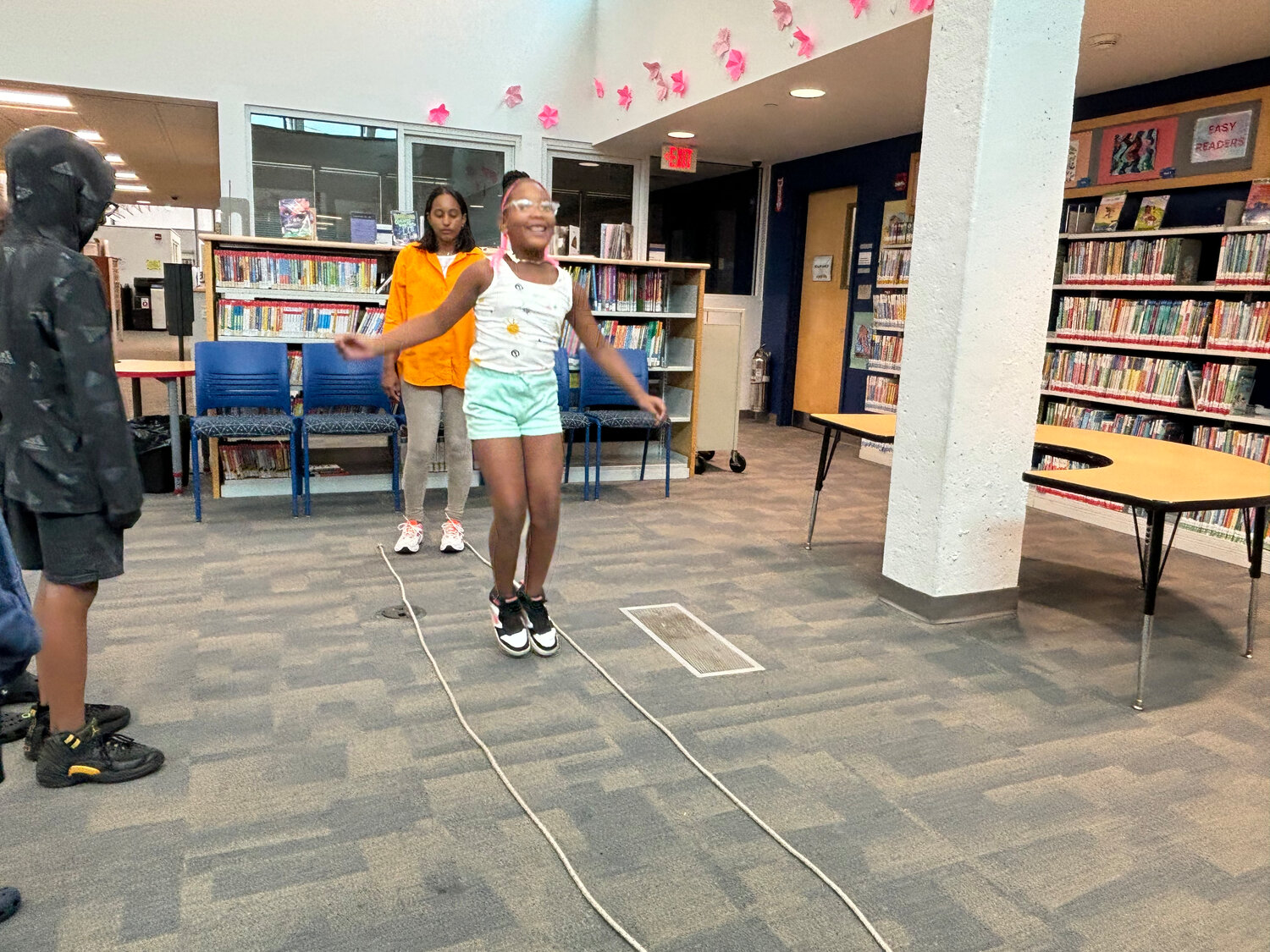Double dutching around the Uniondale library
Jumping rope is a fun and healthy way to exercise, and has been a staple on school playgrounds for decades. Double Dutch is a more intricate form that is known for its fast pace, intricate footwork, and gymnastic tricks. It requires two players to turn two long ropes simultaneously while another player jumps in. This is the minimum number of people for a singles team.
An enthusiastic group of children took part in a recent workshop at the Uniondale Public Library to learn the basics of Double Dutch jump roping. The workshop was held indoors in the children’s area, due to the threat of rain in the forecast on Aug. 9. Tables and chairs had been moved aside to leave plenty of room for the jump ropes.
The workshop was led by Erica Dantzler, 36, of Central Islip, whose full time job is running the recreation program at the Chelsea Assisted Living Facility in Yaphank. Dantzler joined the Central Islip Snazzy Steppers Double Dutch team, coached by David Rockett, in sixth grade. By eighth grade, the team had won two world championships.
“We’ve done so many amazing things with Double Dutch,” Dantzler said. “We were in a Disney Channel movie, I taught at Mayor Bloomberg’s picnic. I’ve done so many cool things.”
Dantzler has been teaching Double Dutch for 18 years, wherever she gets the opportunity. During the school year, she teaches at afterschool programs in Bridgehampton, East Hampton and Springs under the auspices of a nonprofit organization called Project Most. The East Hampton-based group is an afterschool and summer learning program for families that offers children an array of activities.
“Double Dutch is a dying sport,” she said. “You don’t really see children doing it in playgrounds anymore, so I just try to keep it alive.”
She also visits camps, YMCAs and other schools, teaching anyone from kindergarteners through adults.
“With kindergarten and preschool, we start with coordination,” Dantzler said. “You have to start small. I teach them coordination. As long as they can jump, we can do it.”
Dantzler started by leading the children in some gentle stretching. Then she laid out the two ropes parallel to each other on the floor and had each child take a turn standing next to her at one end and “jumping in.” As the children jumped between the ropes, Dantzler counted out the jumping rhythm, “one-two, one-two, one-two,” as each child jumped.
When it was time to move on to actually trying Double Dutch, the children had no hesitation to try it. Dantzler held one end of the ropes and enlisted volunteers by turns to hold the other end. She explained the timing of jumping in and gave each child a few turns to try it. Before long, many of them had successfully jumped in, possibly starting them on a path to some snazzy stepping of their own.
Dantzler can ne reached at EsoFlyy@icloud.com.











